In this issue, we would like to focus on TANA, who released Ballaholic, the first photo book of the Japanese streetball world. What is the beauty and charm of this sweaty, dirty, and varied game, with its many interpretations and rules, through the lens of someone who has been a baller for years and continues to photograph it?
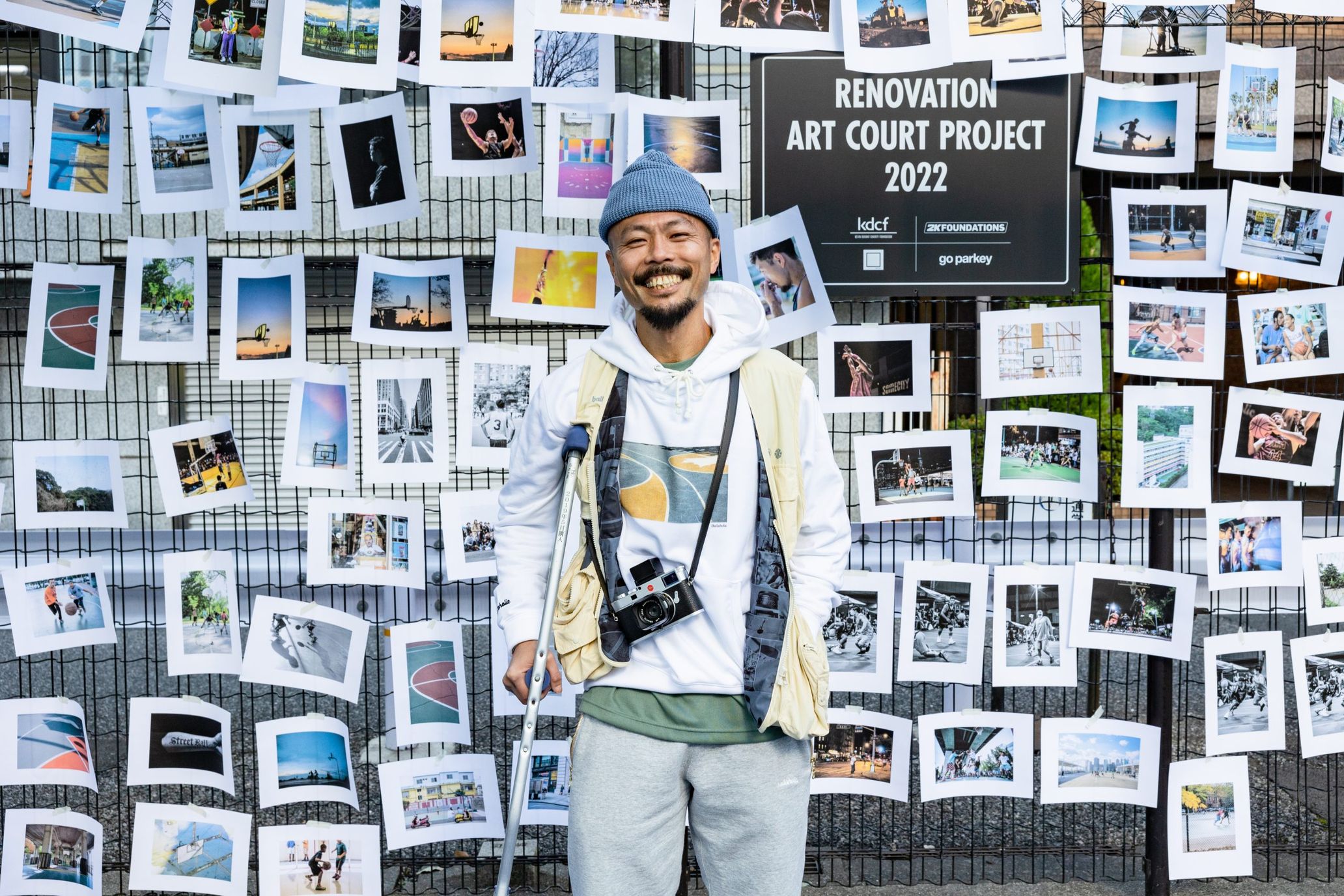
Photographer TANA
Wow, he really looks like he’s having fun when playing basketball.
That was my first impression of Yoshikazu Tanamachi, director of the streetball brand Ballaholic.
When I first met him, the prop he had in his hands was not a camera, but a basketball as TANA the streetballer. He possesses a dribble that sticks to the palm of his hand, unique and creative passes, trick plays that feel as though he’s mocking his opponents, and of course, a killer smile.
When the ball is passed to TANA, who has been nicknamed “WIZARD”, you can’t help but grin and get excited in anticipation for the play he’s about to show us next. As one of the most popular players in the streetball scene, TANA had a mysterious charm that made everyone smile.
But in 2013, he reached a turning point. He decided to call it a career after a sickness that prevented him from playing to his heart’s content. At the time, I unabashedly voiced opinions like, “I don’t want you to quit basketball” and “I hope you return when you feel better”, all from the selfish perspective of a fan. Looking back, those were terrible things for me to say. After retiring from the front lines of being a baller, he started photography while simultaneously handling the brand direction for Ballaholic, which recently celebrated its tenth anniversary.
Even with his background as an art school graduate and baller and the advantages that came with it, it was shocking to see that these photos were taken by a beginner who had just started using a camera. The angles and compositions are sometimes experimental, capturing the tense atmosphere of a game in a way that makes it shine, like the card game I was obsessed with as a child. Above all, the photos are simply cool. His photos have the same effect on the viewers’ hearts as his play style as a baller, making them excited and happy. He possesses a strange charm that has the ability to make people smile.
It’s been eight years since he first got a hold of the camera. SOMECITY, TOKYO STREETBALL CLASSIC, local pickup games, BALL ON JOURNEY… He will pick up his camera again today and travel to the world’s playing grounds and continue to photograph basketball, his love, with a big smile on his face. by Jose Ishii
TANA/Yoshikazu Tanamachi
Photographer. Released Ballaholic, his personal debut photo book as well as the Japanese streetball scene’s first ever photo book. As well as being a baller himself, he is the brand director for Ballahollic. He has contributed to streetball culture and has been involved in leagues, pick-up games and events for many years. In October 2022, he designed the renovated Yoyogi Park basketball court with designer Yoshihiro Kato, who art directed the photo book.
Instagram:@tana_wizard
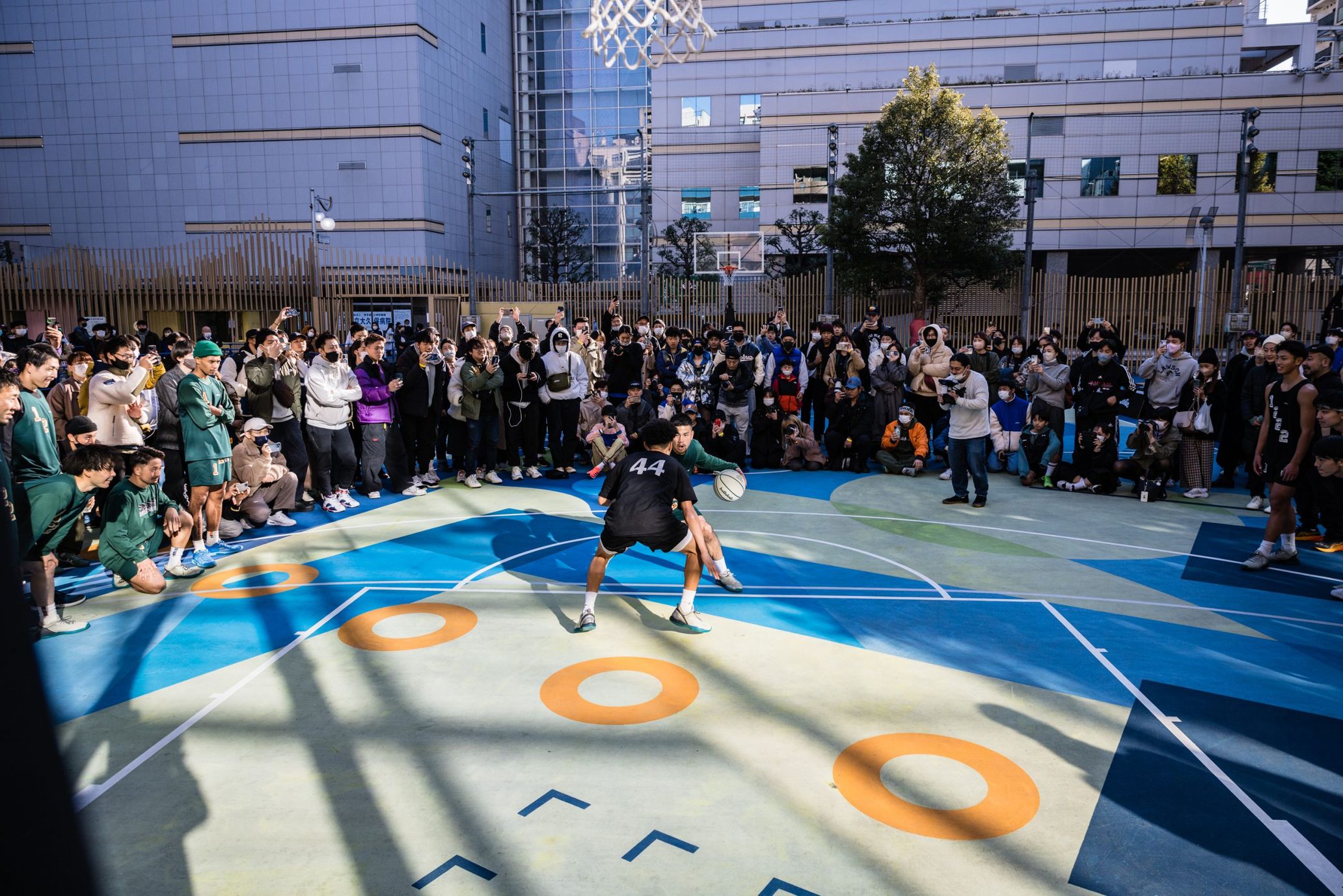
A shot from the photo book unveiling pick-up event at the Art Court in Okubo Park in Shinjuku ward, Tokyo. This was the first Asian project for both community outreach programs of the 2K Foundation of America and NBA superstar Kevin Durant’s charity Foundation (KDCF), where the area was renovated into an Art Court. It was created by artist FATE and the go parkey Association. TANA has shared many journeys through streetball with the representative, AB.
Photos of Streetball
So far in this series, I’ve introduced photographers who are involved in skateboarding, are in Tokyo, and have created something with me. This time, I’d like to introduce a photographer named Yoshikazu Tanamachi, or more commonly known as TANA, which is now basically his real name. He is not a skater. Nor is he a skate photographer. Yes, he is a streetballer.
Streetball can’t be explained as just being a form of basketball. It’s a scene that can often be seen near Tokyo, for example, in Tamachi Park, Koyama Park, Shin Yokohama Park, or Aqua Park in Yokohama. It’s something that’s close to street skateboarding. Well, like skateboarding, it’s difficult to define (or maybe it doesn’t need to be defined). It’s like the difference between street skating and street sections of park skating areas. Or the difference between playing basketball with a basket attached to wherever and playing basketball in a park or gym. Is it just a matter of location? Perhaps. But that doesn’t really matter.
Moves that you want to imitate but can’t. Music that you get hooked on when you’re handling the ball. Lyrics that you don’t know where to use but are taking notes on. A game that only requires one ball and an imagination. The specific way you wear your socks with your fresh pair of sneakers. Photographs that are so perfectly composed that they could be blurry, and photographs that should be trimmed from the moment you take them. Pick-up games where money, fame, obscurity, and age don’t matter… In short, the world captured by TANA is one where people are passionate about basketball and continue to express themselves through it, regardless of whether they’re in a pro league or in school.

The photo book Ballaholic is inspired by the beauty of playing pick-up games on playing grounds around the city and sharing photos with the subjects and those watching. This approach seems to be similar to Ari Marcopoulos‘s photo book CONRAD MCRAE Youth League Tournament.
A yellow photo, SOMECITY
The SOMECITY streetball league has been an essential part of TANA’s work as a streetballer and photographer. Over a decade ago, in the early days of streetball in Japan, this league provided the best stage and playing ground for ballers with excess energy (primarily in Tokyo). TANA was one of the masterminds behind it.
Numerous ballers have been mesmerized, captivated, and moved by SOMECITY. Some have disappeared from the scene, while others are still active. The lack of a retirement age is similar to skateboarding: if you want to do it, you can continue to. That’s all. The beautiful yellow court that symbolizes the league has not changed to this day, and TANA has continued to actively participate in the league as a player and take countless photos on the yellow court. Just as he became passionate about basketball, he also became passionate about photography, and the existence of SOMECITY was a big part of that. He doesn’t take photos with a background in a studio, nor does he use strobes or lenses to create yellow special effects. But every year, a tenth or so of the countless photos he takes is covered in yellow, in a good way. And it has come to be recognized as the beautiful yellow court that’s unique to streetball, as can be seen from the pages of the photo book Ballaholic.
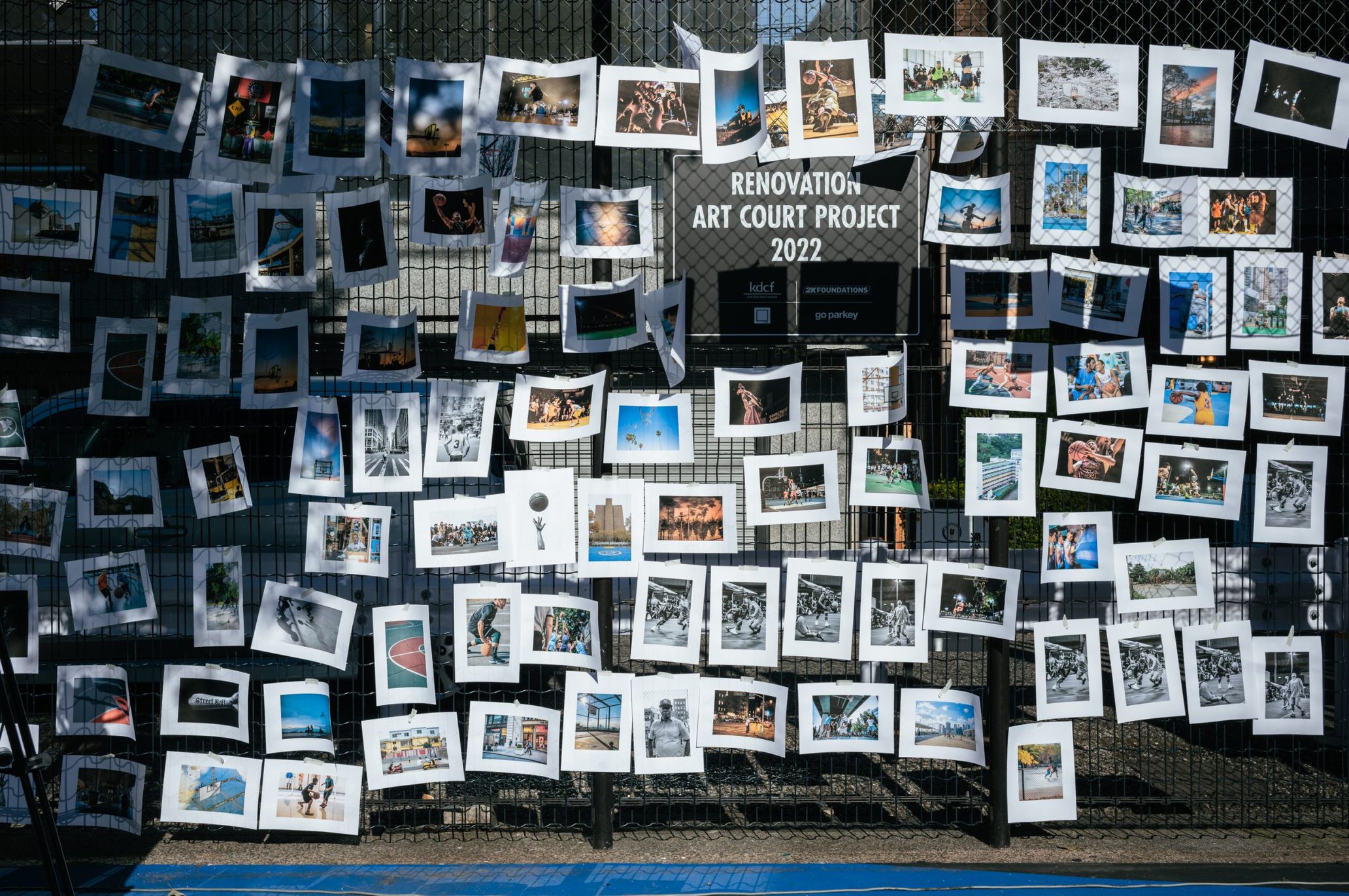
Photos by TANA displayed on an art court in Okubo Park in Shinjuku, Tokyo, which was the first Asia-based project of community support programs by both the American 2K Foundation and the charity foundation (KDCF) of NBA superstar Kevin Durant.
Stunning photos of the playing grounds
A beautiful moment. Perhaps it would be easier to understand if I compared it to a landscape, like a white cumulus cloud that stands out against the endless horizon and blue sky. In front of it is a small white island made of exquisite coral. The water is so clear that you can see the ocean floor, and the sun changes its glistening expression depending on its altitude. Anyone would agree that such a summer island is a beautiful landscape. In streetball, it’s hard to specifically list what’s cool, just like there are various elements of skating that skateboarders think are dope. However, TANA photographs the playing grounds as if he was a player in the game. The shots are stunning. The moment (photo) will be beautiful even to someone who isn’t interested in basketball or who doesn’t know about streetball.
TANA has traveled to various playing grounds around the world. Just as skaters seek out spots in their travels, he has traveled to different playing grounds, given high fives in pick-up games, has hung out with the locals, and taken photos. Some of those playing grounds have legendary images, and some of the photos taken are very spontaneous and TANA-like in their photography. The lights and shadows in the photographs communicate the time and scene of the shot. He never takes his eyes off of the game, and tries to capture both the easily understandable and the more ambiguous elements of the beauty of streetball as much as possible. That’s the kind of photographer TANA is.
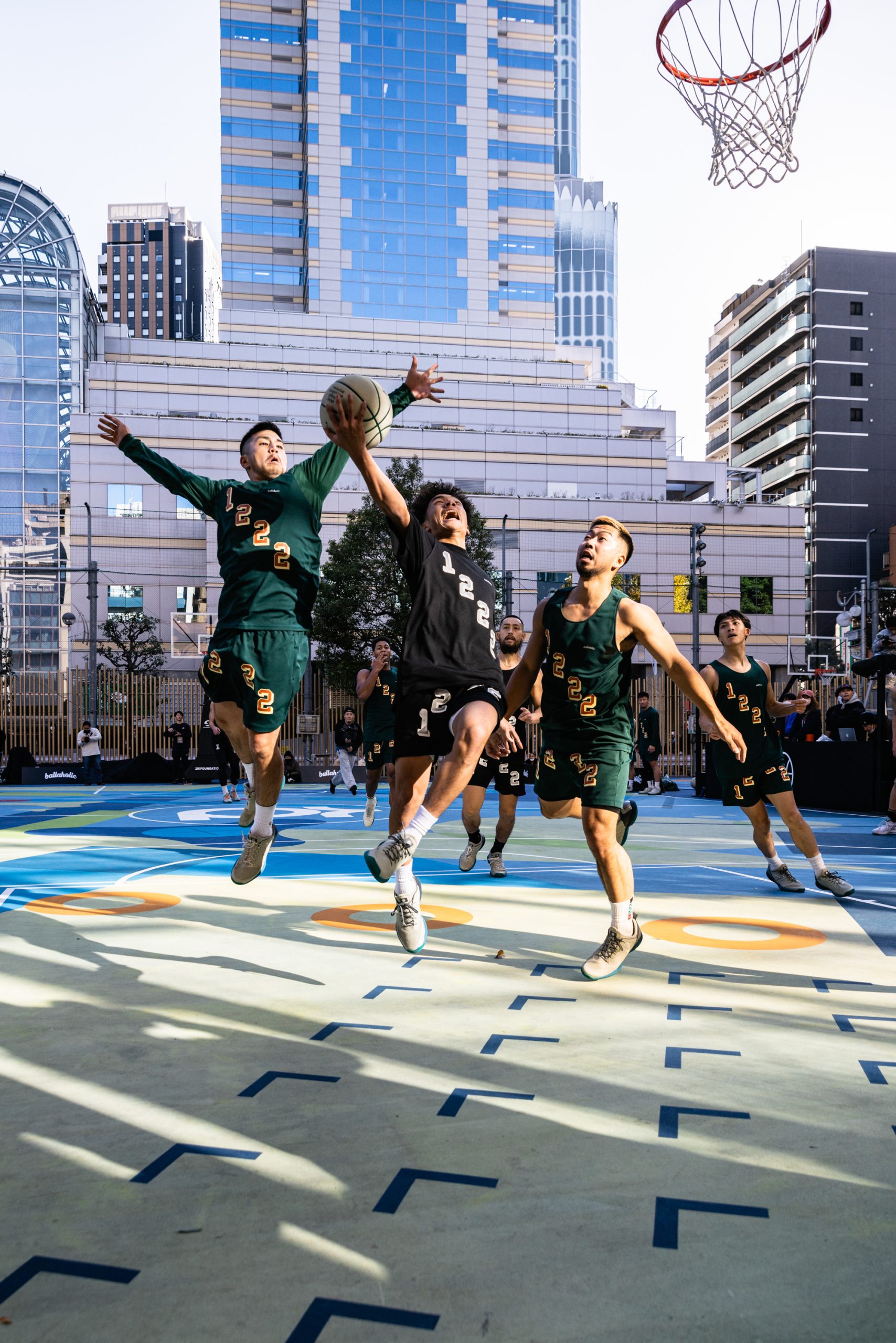
A shot from a pick-up event. The subjects include streetballers KOSUKE, RYO, and KK
Pieces become records
ust like skateboarding, the most enjoyable thing is playing (skating). It’s both an expressive and easily-expressed medium, which is why there are times when it seems like being the player is everything. However, just as with skating, if no one is taking photos of you skating (and the coolness or magnificence of it), it becomes nothing more than an urban legend. Moreover, unless the record is a photo (or video) that properly captures the aesthetics and beauty of the sport, it will only be a distortion of the actual game. This is also true for skateboarding. An amazing skateboarding scene would be ruined without the right camera work. This is because the players (skaters) are that devoted and fixated on their craft.
TANA demands a lot from his subjects, and there are many shots that he wasn’t satisfied with no matter how many times they were taken. For people who aren’t used to being photographed in these scenes, it must have been frustrating. I remember shooting skateboarders in the 1990s and changing lenses depending on the spot or situation, using the exposure meter, setting up several strobes with radio slaves, and sometimes having the skaters change their T-shirts. Because the streets had heavy security, the skaters assumed we had to be quick to photograph our subjects. I still remember the skaters’ confused faces when we took our time photographing them.
Similarly, the streetball subjects are told how to wear uniforms and how to use color. Everything is required to be perfect, including the way they use every part of their body, from their fingertips to their feet. It’s not just about being good at the game, and it’s not just about dunking. Even if you shoot a scoring scene, that alone doesn’t convey the game accurately since it’s a sport that scores dozens of points in a game. It has to capture what kind of shot it was, depicting emotions and stories that otherwise wouldn’t be documented. That’s what TANA’s shooting style does, and he has maintained that throughout the streetball world. From there, the best photographs made it onto the pages of the book. TANA has managed to condense a plethora of his incredible photos into one book.
The great street photographers of the 1990s created skateboarding photos that have both visual appeal and historical value, and are referenced as important records in 2022. They have also become a decisive factor in the existence of the current scene. In the same way, TANA’s photographs and the photo book Ballaholic are in the midst of significantly contributing to the aesthetic sense, dedication, and culture of the Japanese streetball scene beyond the playing.
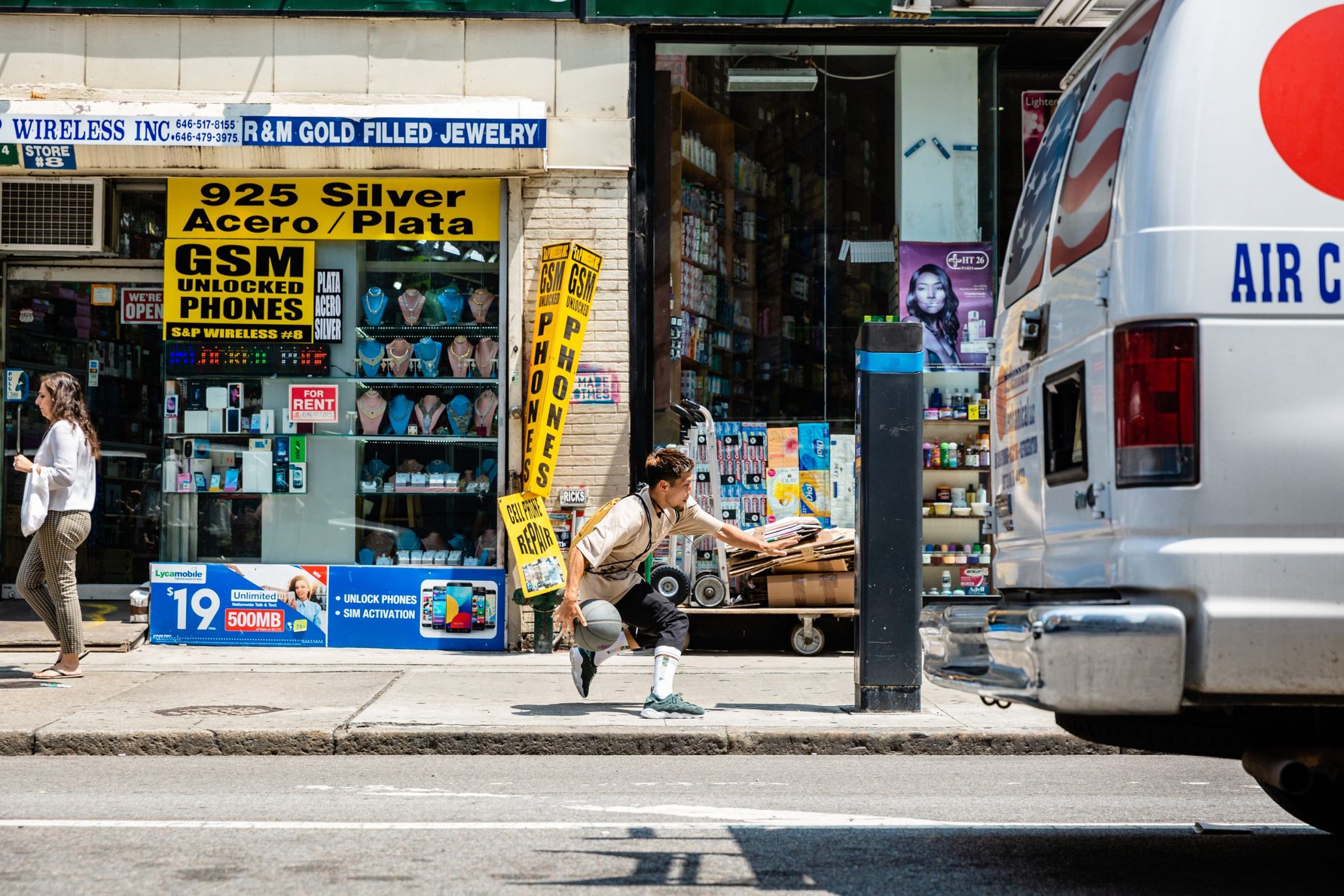
New York, 2018. With one of TANA’s favorite subjects, KOSUKE. From the photobook Balalholic
Pick-up games, an afterward
‘m sure everyone has some scenes that are particularly memorable when watching a movie. Certain templates also exist within movies, like repeatedly used lines and scenes, such as famous “I love you” scenes. Columns, which I’m used to, are mostly personal with clear subjects. But in contrast, when a line like, “that was truly a perfect day” in a film comes up in a scene, I choke up.
For example, an adult daughter goes to see her estranged father, who she has come to hate, and tells him about a particular day when they were together during the biggest crisis of her life. There was nothing special about that day, only a photo her mother took of her father carrying his daughter on his back, on a beautiful beach on a gorgeous day. Both the daughter and the father are smiling with their eyes narrowed at the blinding sun, while the mother was probably smiling as she looked through the camera’s viewfinder. While the daughter and father both conjure up the scene of that day in their minds, they whisper, “that was a perfect day”. Personally, I’m touched by scenes like this.
December 10th, 2022, the Okubo Park Art Court in Shinjuku-ku, Tokyo. Beautiful weather and shining skyscrapers. The contrast of the clear and cold air and the warmth of the sun. Photos of the beautiful renovated court designed by artist FATE and go parkey that are recorded in TANA’s photo book, plastered throughout the park. Ballers who became TANA’s subjects and audience members who love basketball as much as those ballers are present. AB, who is both a subject in the photo book and a baller who painted the court, is in attendance, and Takakuwa, who is also a baller and helped AB with the paint job, is participating in the pick-up game. TANA, who has been creating environments and cultures for ballers through SOMECITY and Ballaholic since the dawn of streetball, is there, as are the kids who admired the likes of TANA and got into basketball themselves. Photographers who influenced and were influenced by TANA, and even the editor who gave me the chance to write this article, are having fun. The energy of everyone’s love for streetball filled the playing ground that day. And the important thing is that this energy contributed to this wonderful tableau shot.
It’s a perfect day. It was a perfect day, like a scene from a movie that I’ve watched so many times because I love it so much.
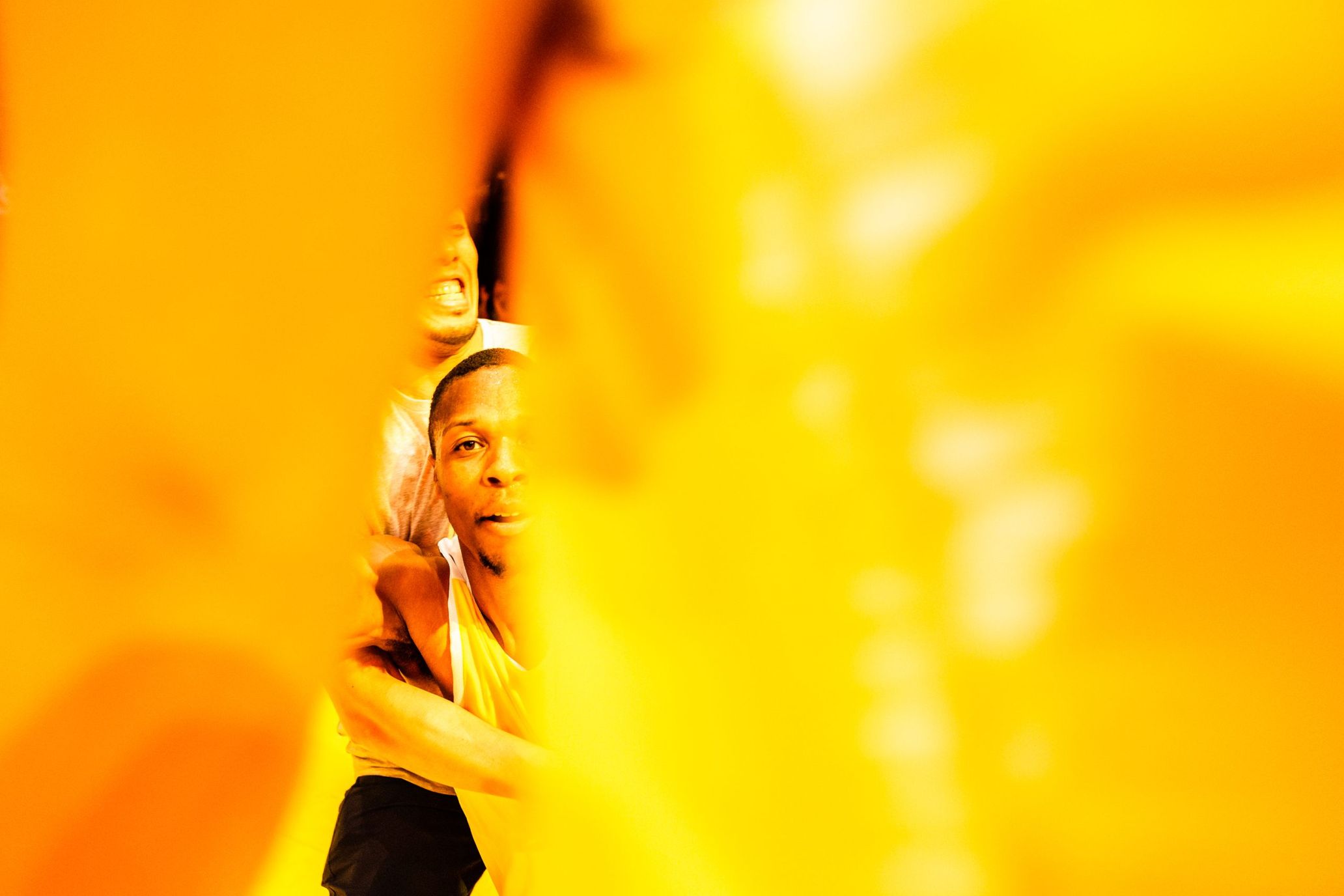
In 2018, at the SOMECITY playing ground in Shinkiba. Pictured are the ballers rushing towards KING HANDLES after he makes a shot during the game’s climax. Included in the photo book Ballaholic.


■ Ballaholic 2014-2019
Published by Outnumbered on December 10th, 2022. TANA’s photo book of remarkable moments in streetball from 2014 to 2019, narrowed down to the years before the pandemic. On the day of the release, the book was unveiled at the Art Court in Shinjuku Okubo Park, where the photographed ballers were given a chance to display and present their photos to the public. All color, 190 pages, 1st edition hardcover, ¥8,800
Instagram:@ballaholic_jpn
Photography Yoshikazu Tanamachi, Jose Ishii(title)
Text Jose Ishii(intro)
Translation Mimiko Goldstein

